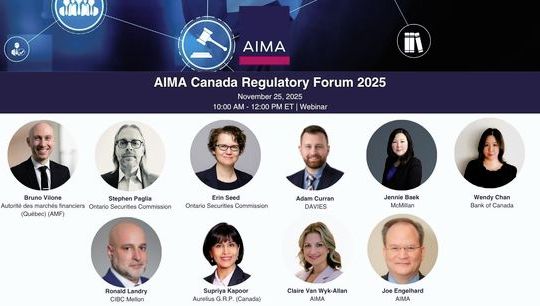Passporting post-Brexit
By Andy Gent, Director, Arkk Solutions
Published: 14 October 2016
A little over three months after the polling stations closed, the Brexit result continues to dominate headlines. The market reaction was instant, and whilst the Lyxor Hedge Fund Index reported a 0.8% rise in July 2016, it remained unclear what would happen next.1
It’s worth remembering that opinion leant heavily towards the UK staying in the EU. Aviva polled fund managers in February 2016 and found 100% expected the nation to vote Remain.2
For regulatory filers, the Alternative Investment Fund Managers Directive (AIFMD) received the most scrutiny both before and after the referendum. As soon as the vote had an official date, experts began analysing every possible option. Would the UK join the EEA? Could the UK passport into Europe without AIFMD? What would happen to UK domiciled UCITS? For filers, and the technology they need to support their requirements, the uncertainty of the Brexit is a challenge that has dominated Q3, and threatens to continue for the next two years.
What does the Brexit mean for AIFMD compliance?
Since 2008, the sheer volume of new regulation has been a burden to fund managers. There’s no doubt that the potential to decrease, or at least stabilise, the amount of reporting would be an appealing outcome of leaving the EU.
A few weeks before June 23rd’s vote, we spoke to our AIFMD clients about the potential impact of the Brexit. One client felt that there would be no change to the reporting requirements, but that a Brexit may incentivise AIFMs to concentrate their business activities in the UK. This would be especially prominent if the UK does not join the EEA, and adopts a US or Hong Kong approach to AIFMD. The volume of regulation may not reduce anytime soon, yet the Leave vote does make it unlikely that any new regulation will be put forward until well after the Brexit implementation.
The end result will most likely see Britain negotiate to keep the same passporting rights it has now. Annex IV regulations have always been the price for EU-wide access. This will need to continue if fund managers want to market across the continent - and it's in everyone's best interest that they continue marketing. As London is the centre for European hedge funds, decision makers in the EU and the UK have a joint interest in working out the logistics of the Brexit. Awarding the UK a third-party passporting extension seems the most mutually beneficial outcome.
Will the Brexit impact how you report AIFMD?
Behind the scenes of regulatory reporting lies a significant technical challenge. There are over 300 data points to collect and some jurisdictions must convert their templates into XML format. In the wake of Brexit uncertainty, firms may be debating bringing AIFMD in-house with an internal system. Fund managers should remember the real cost of attempting to manage an AIFMD IT build from 2009.
When AIFMD was first announced, quite a few companies set off to develop in-house solutions, only to abandon the project a few years later. This is because at a glance AIFMD looks like another simple XML schema build. The reality is that maintaining an Annex IV reporting tool requires a team dedicated to the task. Keeping the software up-to-date, providing expertise on regulatory and Brexit updates, and ensuring that your build supports all schemas and variances, will require at least 2-3 people. The cost of maintaining a solution in-house goes far beyond the initial cost of building the tool.
Unlike everyday XML builds which your IT department will be familiar with, Annex IV reporting systems depend on a third party, the regulators. ESMA will release updates and new requirements whenever it needs to, which will not always fit in with your technical roadmap. To keep up with the varying demands of both ESMA and your local regulator, you would need to have resources available at all times to update the system. This ultimately makes an AIFMD build far more resource-heavy than first anticipated.
Schemas vary across Europe, and changes to a jurisdiction's requirements are frequent. January 2017 for example, will see Gibraltar filing in XML for the first time and Hungary joining the directive. Depending on the differences, filing to two jurisdictions could mean double the work for your IT department. It seems unlikely there will be extra development needed for the Brexit, but it's impossible to tell at this stage. Whilst the future of the UK’s passporting and AIFMD requirements are unclear, it is best to trust regulatory experts with your reporting. This means you don't have to undertake a costly and unmanageable in-house build, or keep an eye on the technical updates across Europe.
So if there is no significant change to financial regulation in the short term, what can fund managers do to prepare? We’ve spoken to our AIFMD clients to find out what they are doing as a result of the Brexit. The main comment we’re hearing: maintain business as usual and keep informed. Inactivity and indecision will cause the most challenges following the referendum. The top priority is to ensure that you remain focused on your current business objectives - there is no need to make plans based on speculation.
In time we will come to understand the full impact of the Brexit on AIFMD. For now, fund managers should ensure that they’re working with regulatory experts who can keep up-to-date with ESMA’s requirements. This gives you the breathing space to maintain business as usual, and to ensure that your clients feel confident and informed.
Footnotes
1 HedgeWeek, accessed 10/08/2016 http://www.hedgeweek.com/2016/08/10/242526/hedge-funds-08-cent-post-brexit
2 Fund Strategy, accessed 07/03/2016 https://www.fundstrategy.co.uk/bond-managers-do-not-expect-a-brexit-aviva-poll-shows/







